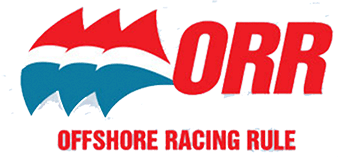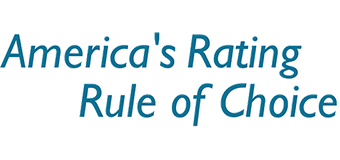Q: What does the ORR do?
A: The ORR team maintains up-to-date scientific measurement and calculation to:
- Use its proprietary ORR Velocity Prediction Program (ORR VPP) to determine a boat's speed potential at different wind speeds.
- Compares data from hundreds of boats to predict the performance of a boat at different wind speeds and wind angles in order to calculate individual boat ratings.
- Applies time on time scoring to compare each boat's finish to the elapsed time of first boat to finish giving the fairest rating possible.
Q: How is the ORR rating system “fair”?
A: The ORR is an equitable rating that makes racing fair by:
- Determining the ratings for different types of boats in order to race who race on courses that have a variety of wind speeds and directions.
- Allowing crews to compete based on talent and skill rather than conditions that favor certain boat types.
- Minimizing the effect of costly optimizations to hulls and rigs.
Q: Does racing under ORR really make a difference?
A: Racing under the ORR results in:
- Encouraging owners of existing boats to participate in local, regional - offshore and inshore racing with the boats they own.
- Finishes are based on crew performance rather than boats optimized to a rating system.
- Decreasing an owner's inclination to only enter races that favor his or her boat.
Q: In simple terms, please explain how ORR rates different boats according to the wind direction and wind speed in an offshore race.
A: All boats have different sailing characteristics depending on the conditions. The ORR Vpp predicts a particular boat’s speed for each component of the course that is sailed in windward, reaching and running directions at varying wind speeds. Some regattas will have a VPP based on the weather conditions on the course. In other cases, the race authorities will pick an all-purpose number or other available Vpp before the start in order to maximize fair racing..
Q: Is it possible to have a single number rating for competing boats in a race so that we are able to easily compare how we are doing on the water versus other boats in our class?
A: Yes. Single number ratings are available in either time on time (TOT) or time on distance (TOD).
Q: If it is possible to have a single number for ORR – how is that better than a single number for PHRF or IRC?
A: The ORR VPP based on a computer model that has been tested in wind tunnel and tank testing with the addition of actual racecourse experience. This VPP calculation is constantly updated to give the most up to date rating possible. PHRF ratings are based on local rating committee that may or may not be accurate. IRC is a secret rule that will heavily favor boats that fit the type form and specific design parameters as opposed to fairly rating the potential speed of the boat on the race course.
Q: Why is the ORR a limited access handicap system?
A: ORR has developed a very sophisticated computer program to rate boats fairly and it is constantly being improved as the science gets better. Historical experience with other handicap systems has demonstrated that designers are adept at locating small loopholes in any rule and then taking advantage of that system by designing/modifying boats accordingly. ORR is about racing on the course not about design loopholes. ORR does not limit design design innovation nor dictate design parameters, nor does it allow new designs a favourable rating over older designs.
Q: Why is it important to measure sails?
A: The size sails in an inventory is crucial to fair handicapping – equivalent to the importance of the engine displacement in a race car. Every major regatta should require at a minimum, sail measurement to ensure fair racing.
Q: Which rule gives the fairest ratings across the fleet of older and newer boat designs?
A: The philosophy of ORR is that it should rate all boats as fairly as possible and not aim to develop a particular type of design. Other rules promote a particular type of boat design (type forming) – e.g. “downwind flyer or upwind rocket” - giving a handicap advantage to that design.
Q: What is the difference between Time on Distance (TOD), Time on Time (TOT) and Performance Curve Scoring (PCS)? Are they all single number?
TOD –Time on Distance scoring is the simplest method to understand and is the one that is most familiar to the PHRF sailor. It uses seconds per mile allowances between boats multiplied by the distance to predict the elapsed time for each boat. Unfortunately, TOD tends to give unfair results in light air where the differences between the boats are usually greater than in the typical winds for which the ratings were designed.
TOT – Time on Time assumes a constant ratio of boat speed without need for considering distance. This method has the advantage of a built in adjustment of ratings for wind speed since light air, slower races will have larger elapsed times and a greater absolute difference between slower and faster boats in their predicted speed (with a constant RATIO of boat speeds). A potential downside of TOT occurs if the wind dies during the race: no one is moving but the time allowances between boats are growing because the elapsed time is growing giving an advantage to slower boats.
PCS - Performance Curve Scoring. The VPP-based ORR system allows organizers to utilize a scoring model that replicates the historic conditions of beat, reach and run seen in a typical race. The VPP predicts the seconds per mile ratings over a range of wind speeds to generate a curve of performance vs. wind. For each boat the elapsed time is divided by the course distance to get elapsed seconds per mile. This is dropped onto the performance curve to find the average wind it appears the boat sailed in, dubbed the Implied Wind. This is then converted to a corrected time using a scratch boat. As it turns out, the boat with the highest Implied Wind wins the race, because relative to their rating they sailed the course the fastest among the competitors. I.e., they sailed so fast it looked like they had the highest wind.
Q: Which one is better? TOD? TOT? PCS?
A. In general, the assumption is that TOT is more accurate than TOD. ORR uniquely allows for the assignment of single number ratings based on course configuration (i.e. wind direction) and experienced or predicted average wind speeds. The ORA promotes the use of TOT over TOD.
Q: Isn’t this just IMS warmed over?
A. No – some of the science of older rules such as MHS and IMS served as the scientific basis for ORR but the rating formula is totally different than those older systems. Further, ORR is a limited access handicap system, which reduces the opportunity for designers to take advantage of even minor loopholes as the rule is continuously updated to keep pace with the changing scientific information.
Q: What is the difference between ORC and ORR?
A: ORC is based on the old IMS. It is managed by a separate European organization and is used outside North America.
Q: I have a traditional cruiser/racer – why is the ORR class a good rule for me?
A: ORR has an extensive database that does a good job at handicapping boats of different ages, designs and types. It is the only handicap system that allows for adjusting rating according to course and wind conditions. This equalizes the ratings between the downwind flyers, upwind rockets and the more “all around” designed boats.
Q: Who can I call to discuss the ORR and my boat?
A: Questions from owners and race organizers other than measurement or certificate please email: [email protected]and one of our experts will get back to you
For certificate processing and measurement questions - US Offshore is the certificate partner for the ORR and is available to answer your questions on certificate processing and measurment. (Email: [email protected] or phone: 401-683-0800).
Q: How do I find out about racing under ORR?
A: Races employing ORR scoring are organized and managed by boat clubs and event organizers. For more information on events and championship series go to: http://offshoreracingrule.org/
Q: How are ORR races scored?
A: ORR encourages the use of single number time-on-time scoring for closed course racing. Time on distance ratings and the more complex Performance Curve Scoring are available for Race Organizers to use in their events. The option exists for race organizers to customize the race specific ratings to the specific conditions for an individual event. (Every ORR certificate lists the handicapping ratings for a variety of events). This customization utilizes the inherent advantages of the VPP to provide the fairest racing possible no matter what the conditions of wind and course.


